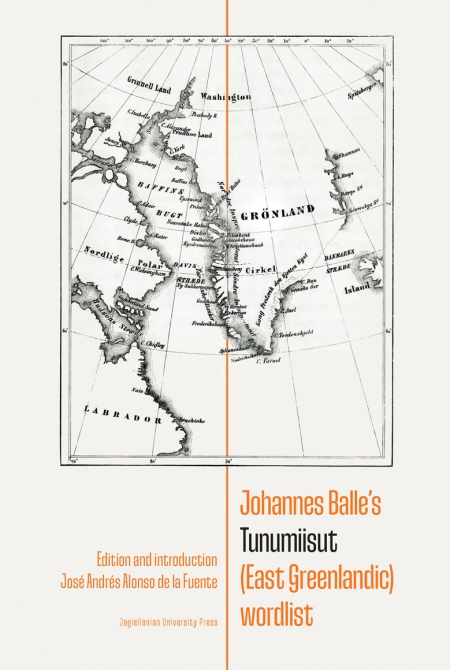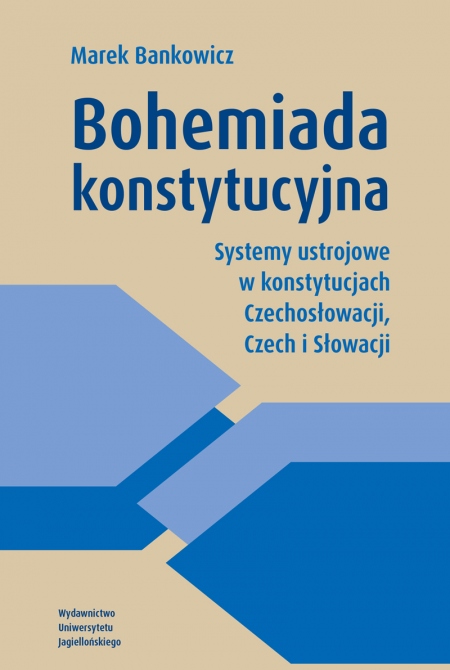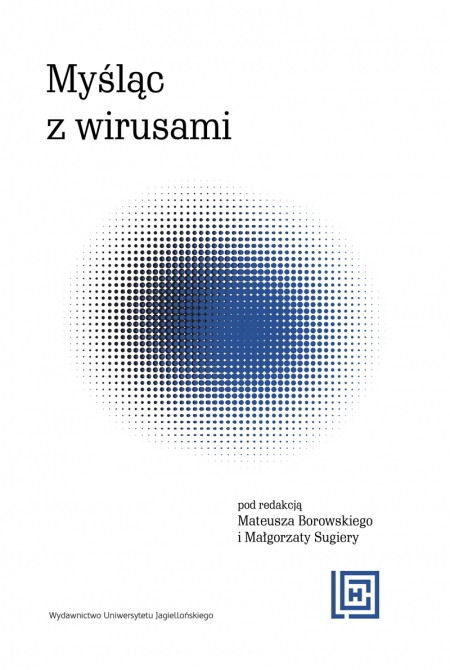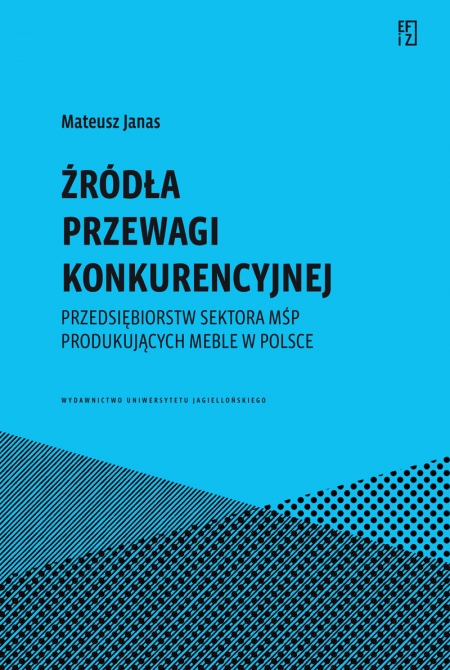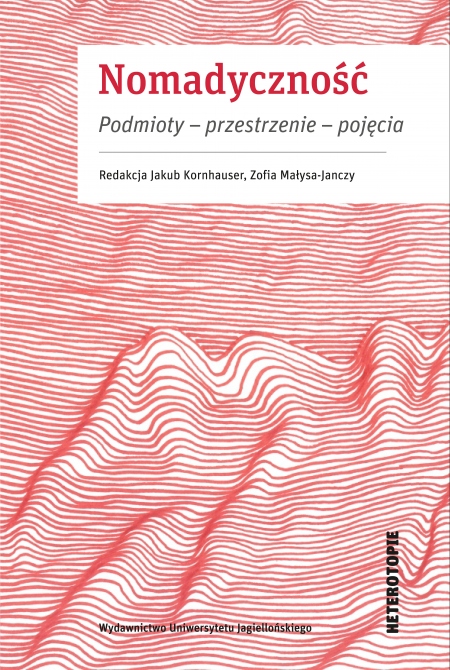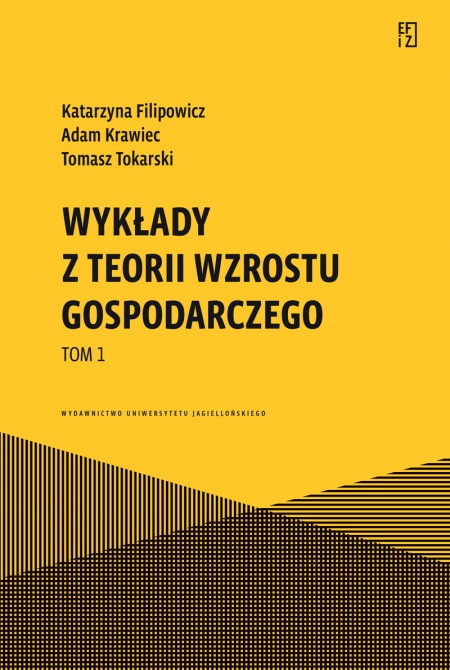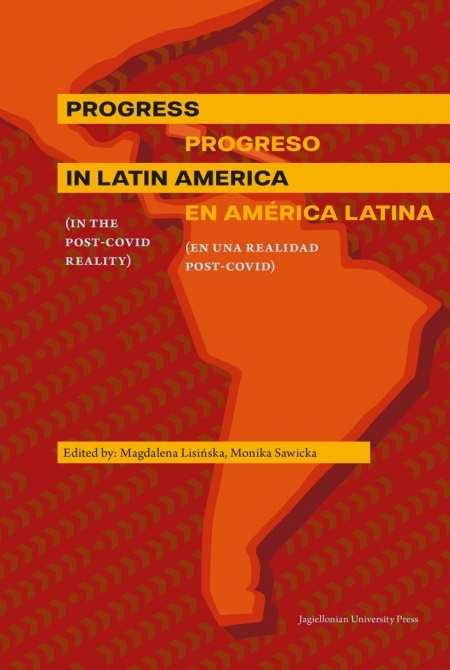Applying the Constitution of the Republic of Poland in Horizontal Relations
Liczba stron: 154
Format: B5
Rok wydania: 2015
Data premiery: 19.11.2015
Opis książki
There is no doubt in contemporary jurisprudence that constitutional norms, including those that enshrine rights and freedoms, not only determine the shape of the relations between an individual and the state (so-called vertical relations), but also influence relations between private entities (so-called horizontal relations). This is so, because private law may not be formed independently of the constitution, which has the supreme legal force, while relations between private entities may not be entirely detached from the rights guaranteed by the state to the parties to these relations. In view of the foregoing, for several decades now, in the legal literature of a number of countries references have been made to the horizontal application of constitutional rights, their horizontal dimension or their horizontal effect.
Despite volumes of research on the subject, the problem of the horizontal effect of constitutional rights continues to enjoy steadfast interest in Western literature, as evidenced by the recent collective studies that analyze this issue from a comparative perspective. These collective works have failed, however, to present the approach of Polish jurisprudence and judicature. Although the problem of the horizontal application of constitutional rights has so far been only sporadically taken up in the Polish legal literature, the Constitution of the Republic of Poland is applied in the judicature and influences the shape of private relations. Polish courts also adopt solutions specific to the particular models for the horizontal application of constitutional rights, although they do not explicitly refer to the models. This inspired Monika Florczak-Wątor (Department of Constitutional Law, Jagiellonian University in Cracow) to initiate research on the problem of the horizontal effect of constitutional rights, the results of which have been presented in a monograph Horyzontalny wymiar praw konstytucyjnych (Jagiellonian University Press, Cracow 2014).
This book is an abbreviated version of that monograph, and its purpose is to make the results of her research known to English-speaking readers and to disseminate the approach of the Polish judicature and jurisprudence on the horizontal effect of individual rights beyond the boundaries of Poland. This book has been written in the framework of the research project ‘The horizontal dimension of the constitutional rights in a comparative perspective’ financed by the Foundation for Polish Science.
Despite volumes of research on the subject, the problem of the horizontal effect of constitutional rights continues to enjoy steadfast interest in Western literature, as evidenced by the recent collective studies that analyze this issue from a comparative perspective. These collective works have failed, however, to present the approach of Polish jurisprudence and judicature. Although the problem of the horizontal application of constitutional rights has so far been only sporadically taken up in the Polish legal literature, the Constitution of the Republic of Poland is applied in the judicature and influences the shape of private relations. Polish courts also adopt solutions specific to the particular models for the horizontal application of constitutional rights, although they do not explicitly refer to the models. This inspired Monika Florczak-Wątor (Department of Constitutional Law, Jagiellonian University in Cracow) to initiate research on the problem of the horizontal effect of constitutional rights, the results of which have been presented in a monograph Horyzontalny wymiar praw konstytucyjnych (Jagiellonian University Press, Cracow 2014).
This book is an abbreviated version of that monograph, and its purpose is to make the results of her research known to English-speaking readers and to disseminate the approach of the Polish judicature and jurisprudence on the horizontal effect of individual rights beyond the boundaries of Poland. This book has been written in the framework of the research project ‘The horizontal dimension of the constitutional rights in a comparative perspective’ financed by the Foundation for Polish Science.
Autorzy
Monika Florczak-Wątor
ISBN: 978-83-233-4017-1
e-ISBN (pdf): 978-83-233-9319-1
Kraj pochodzenia producenta: Polska
POLECANE KSIĄŻKI
NOWOŚCI

Applying the Constitution of the Republic of Poland in Horizontal Relations
SPIS TREŚCI
CONTENTS
Introduction 7
1. The Problem of the Horizontal Effect of Constitutional Rights during the Drafting of the Polish Constitution 13
1.1. The Period Preceding the Drafting of the Constitution 13
1.2. Solutions Adopted in Drafts of the Constitution 15
1.3. Discussion on the Inclusion of the Horizontal Effect Clause 17
1.4. Conclusions Impacting the Interpretation of Constitutional Provisions 18
2. Holders of Constitutional Rights and Freedoms 21
2.1. Regulation of Rights and Freedoms in the Polish Constitution 21
2.2. Th e Principle of Universal Enjoyment of Constitutional Rights and Freedoms 24
2.3. Citizen as a Holder of Constitutional Rights and Freedoms 25
2.4. Special Defi nitions of Holders of Constitutional Rights and Freedoms 27
2.5. Question of the Constitutional Personality of Entities Performing the Functions of Public Authorities 28
2.6. Question of the Constitutional Personality of Public-Sector Economic Entities 30
3. Direct Application of the Constitution as the Condition for the Horizontal Effect of Constitutional Rights and Freedoms 35
3.1. Normative Content of the Principle of Direct Application of the Constitution 35
3.2. The Principle of Direct Application of the Constitution versus the Principle of its Supremacy 37
3.3. Conditions Underlying the Direct Application of the Constitution 38
3.4. Forms of Direct Application of the Constitution 40
3.4.1. Autonomous Application of the Constitution 40
3.4.2. Co-application of the Constitution and Statutes 44
3.4.3. Control Application of the Constitution and Statutes 46
3.5. Exceptions to the Rule of Direct Application of the Constitution 48
4. The Scope of the Horizontal Eff ect of Constitutional Rights 51
4.1. Preliminary Remarks 51
4.2. The Notion of Collision of Constitutional Rights 52
4.3. Constitutional Rights as Principles (Optimization Requirements) 53
4.4. The Principle of Proportionality and Its Importance for the Horizontal Effect of Constitutional Rights 55
4.5. The Mechanism of Balancing Values Underlying Constitutional Rights 62
4.5.1. The Notion of Values 62
4.5.2. Axiological Foundations of the Constitution 65
4.5.3. Axiology of Constitutional Rights and Freedoms of an Individual 68
4.5.4. Principles of the Value Balancing Mechanism 70
4.5.5. The Principle of Respecting Constitutional Rights and Freedoms as a Natural Method of Resolving Collisions of Constitutional Rights 74
4.6. Closing Remarks 76
5. Adaptations of Models of the Horizontal Effect of Constitutional Rights and Freedoms in the Polish Constitutional Reality 79
5.1. The Model of the Direct Horizontal Effect of Constitutional Rights 80
5.1.1. Preliminary Remarks 80
5.1.2. Characteristics of the Model Based on Examples of States Where it is Applied 81
5.1.3. Rights and Freedoms in the Polish Constitution which are Capable of Direct Horizontal Effect 86
5.1.4. Private Entities as Entities Beholden to Implement Constitutional Rights and Freedoms 89
5.1.5. Obligations Correlated with Constitutional Rights and Freedoms 94
5.1.6. Consequences of Infringements of Constitutional Rights and Freedoms by Private Entities 97
5.1.7. Closing Remarks 104
5.2. The Model of the Indirect Horizontal Eff ect of Constitutional Rights 105
5.2.1. Preliminary Remarks 105
5.2.2. Characteristics of the Model Based on Examples of States Where it is Applied 106
5.2.3. Transposition of Constitutional Values into Private Law as a Result of the Direct Application of the Polish Constitution 109
5.2.3.1. Basic Assumptions of the Constitutional Values Radiating Effect 109
5.2.3.2. The Role of General Clauses and Other Indeterminate Phrases 110
5.2.3.3. Co-Application of the Constitution and Statutes as a Method of Endowing General Clauses and Other Indeterminate Phrases with Contents 116
5.2.3.4. The Court as the Authority Transposing Constitutional Values into Private Law 118
5.2.3.5. Controlling the Manner of Transposing Constitutional Values into Private Law 119
5.2.3.6. Closing Remarks 122
5.3. The Model of the State’s Protective Obligations in Horizontal Relations 122
5.3.1. Preliminary Remarks 122
5.3.2. Characteristics of the Model Based on Example of State Where it is Applied 124
5.3.3. The State as an Entity Beholden to Implement Constitutional Rights and Freedoms 126
5.3.4. Positive Character of the State’s Obligation to Protect Constitutional Rights and Freedoms of Individuals 128
5.3.5. Obligation for the State to Protect the Weaker Party to the Horizontal Relation 132
5.3.6. Closing Remarks 136
Conclusion 139
Bibliography 143
Introduction 7
1. The Problem of the Horizontal Effect of Constitutional Rights during the Drafting of the Polish Constitution 13
1.1. The Period Preceding the Drafting of the Constitution 13
1.2. Solutions Adopted in Drafts of the Constitution 15
1.3. Discussion on the Inclusion of the Horizontal Effect Clause 17
1.4. Conclusions Impacting the Interpretation of Constitutional Provisions 18
2. Holders of Constitutional Rights and Freedoms 21
2.1. Regulation of Rights and Freedoms in the Polish Constitution 21
2.2. Th e Principle of Universal Enjoyment of Constitutional Rights and Freedoms 24
2.3. Citizen as a Holder of Constitutional Rights and Freedoms 25
2.4. Special Defi nitions of Holders of Constitutional Rights and Freedoms 27
2.5. Question of the Constitutional Personality of Entities Performing the Functions of Public Authorities 28
2.6. Question of the Constitutional Personality of Public-Sector Economic Entities 30
3. Direct Application of the Constitution as the Condition for the Horizontal Effect of Constitutional Rights and Freedoms 35
3.1. Normative Content of the Principle of Direct Application of the Constitution 35
3.2. The Principle of Direct Application of the Constitution versus the Principle of its Supremacy 37
3.3. Conditions Underlying the Direct Application of the Constitution 38
3.4. Forms of Direct Application of the Constitution 40
3.4.1. Autonomous Application of the Constitution 40
3.4.2. Co-application of the Constitution and Statutes 44
3.4.3. Control Application of the Constitution and Statutes 46
3.5. Exceptions to the Rule of Direct Application of the Constitution 48
4. The Scope of the Horizontal Eff ect of Constitutional Rights 51
4.1. Preliminary Remarks 51
4.2. The Notion of Collision of Constitutional Rights 52
4.3. Constitutional Rights as Principles (Optimization Requirements) 53
4.4. The Principle of Proportionality and Its Importance for the Horizontal Effect of Constitutional Rights 55
4.5. The Mechanism of Balancing Values Underlying Constitutional Rights 62
4.5.1. The Notion of Values 62
4.5.2. Axiological Foundations of the Constitution 65
4.5.3. Axiology of Constitutional Rights and Freedoms of an Individual 68
4.5.4. Principles of the Value Balancing Mechanism 70
4.5.5. The Principle of Respecting Constitutional Rights and Freedoms as a Natural Method of Resolving Collisions of Constitutional Rights 74
4.6. Closing Remarks 76
5. Adaptations of Models of the Horizontal Effect of Constitutional Rights and Freedoms in the Polish Constitutional Reality 79
5.1. The Model of the Direct Horizontal Effect of Constitutional Rights 80
5.1.1. Preliminary Remarks 80
5.1.2. Characteristics of the Model Based on Examples of States Where it is Applied 81
5.1.3. Rights and Freedoms in the Polish Constitution which are Capable of Direct Horizontal Effect 86
5.1.4. Private Entities as Entities Beholden to Implement Constitutional Rights and Freedoms 89
5.1.5. Obligations Correlated with Constitutional Rights and Freedoms 94
5.1.6. Consequences of Infringements of Constitutional Rights and Freedoms by Private Entities 97
5.1.7. Closing Remarks 104
5.2. The Model of the Indirect Horizontal Eff ect of Constitutional Rights 105
5.2.1. Preliminary Remarks 105
5.2.2. Characteristics of the Model Based on Examples of States Where it is Applied 106
5.2.3. Transposition of Constitutional Values into Private Law as a Result of the Direct Application of the Polish Constitution 109
5.2.3.1. Basic Assumptions of the Constitutional Values Radiating Effect 109
5.2.3.2. The Role of General Clauses and Other Indeterminate Phrases 110
5.2.3.3. Co-Application of the Constitution and Statutes as a Method of Endowing General Clauses and Other Indeterminate Phrases with Contents 116
5.2.3.4. The Court as the Authority Transposing Constitutional Values into Private Law 118
5.2.3.5. Controlling the Manner of Transposing Constitutional Values into Private Law 119
5.2.3.6. Closing Remarks 122
5.3. The Model of the State’s Protective Obligations in Horizontal Relations 122
5.3.1. Preliminary Remarks 122
5.3.2. Characteristics of the Model Based on Example of State Where it is Applied 124
5.3.3. The State as an Entity Beholden to Implement Constitutional Rights and Freedoms 126
5.3.4. Positive Character of the State’s Obligation to Protect Constitutional Rights and Freedoms of Individuals 128
5.3.5. Obligation for the State to Protect the Weaker Party to the Horizontal Relation 132
5.3.6. Closing Remarks 136
Conclusion 139
Bibliography 143
Applying the Constitution of the Republic of Poland in Horizontal Relations
SPIS TREŚCI
CONTENTS
Introduction 7
1. The Problem of the Horizontal Effect of Constitutional Rights during the Drafting of the Polish Constitution 13
1.1. The Period Preceding the Drafting of the Constitution 13
1.2. Solutions Adopted in Drafts of the Constitution 15
1.3. Discussion on the Inclusion of the Horizontal Effect Clause 17
1.4. Conclusions Impacting the Interpretation of Constitutional Provisions 18
2. Holders of Constitutional Rights and Freedoms 21
2.1. Regulation of Rights and Freedoms in the Polish Constitution 21
2.2. Th e Principle of Universal Enjoyment of Constitutional Rights and Freedoms 24
2.3. Citizen as a Holder of Constitutional Rights and Freedoms 25
2.4. Special Defi nitions of Holders of Constitutional Rights and Freedoms 27
2.5. Question of the Constitutional Personality of Entities Performing the Functions of Public Authorities 28
2.6. Question of the Constitutional Personality of Public-Sector Economic Entities 30
3. Direct Application of the Constitution as the Condition for the Horizontal Effect of Constitutional Rights and Freedoms 35
3.1. Normative Content of the Principle of Direct Application of the Constitution 35
3.2. The Principle of Direct Application of the Constitution versus the Principle of its Supremacy 37
3.3. Conditions Underlying the Direct Application of the Constitution 38
3.4. Forms of Direct Application of the Constitution 40
3.4.1. Autonomous Application of the Constitution 40
3.4.2. Co-application of the Constitution and Statutes 44
3.4.3. Control Application of the Constitution and Statutes 46
3.5. Exceptions to the Rule of Direct Application of the Constitution 48
4. The Scope of the Horizontal Eff ect of Constitutional Rights 51
4.1. Preliminary Remarks 51
4.2. The Notion of Collision of Constitutional Rights 52
4.3. Constitutional Rights as Principles (Optimization Requirements) 53
4.4. The Principle of Proportionality and Its Importance for the Horizontal Effect of Constitutional Rights 55
4.5. The Mechanism of Balancing Values Underlying Constitutional Rights 62
4.5.1. The Notion of Values 62
4.5.2. Axiological Foundations of the Constitution 65
4.5.3. Axiology of Constitutional Rights and Freedoms of an Individual 68
4.5.4. Principles of the Value Balancing Mechanism 70
4.5.5. The Principle of Respecting Constitutional Rights and Freedoms as a Natural Method of Resolving Collisions of Constitutional Rights 74
4.6. Closing Remarks 76
5. Adaptations of Models of the Horizontal Effect of Constitutional Rights and Freedoms in the Polish Constitutional Reality 79
5.1. The Model of the Direct Horizontal Effect of Constitutional Rights 80
5.1.1. Preliminary Remarks 80
5.1.2. Characteristics of the Model Based on Examples of States Where it is Applied 81
5.1.3. Rights and Freedoms in the Polish Constitution which are Capable of Direct Horizontal Effect 86
5.1.4. Private Entities as Entities Beholden to Implement Constitutional Rights and Freedoms 89
5.1.5. Obligations Correlated with Constitutional Rights and Freedoms 94
5.1.6. Consequences of Infringements of Constitutional Rights and Freedoms by Private Entities 97
5.1.7. Closing Remarks 104
5.2. The Model of the Indirect Horizontal Eff ect of Constitutional Rights 105
5.2.1. Preliminary Remarks 105
5.2.2. Characteristics of the Model Based on Examples of States Where it is Applied 106
5.2.3. Transposition of Constitutional Values into Private Law as a Result of the Direct Application of the Polish Constitution 109
5.2.3.1. Basic Assumptions of the Constitutional Values Radiating Effect 109
5.2.3.2. The Role of General Clauses and Other Indeterminate Phrases 110
5.2.3.3. Co-Application of the Constitution and Statutes as a Method of Endowing General Clauses and Other Indeterminate Phrases with Contents 116
5.2.3.4. The Court as the Authority Transposing Constitutional Values into Private Law 118
5.2.3.5. Controlling the Manner of Transposing Constitutional Values into Private Law 119
5.2.3.6. Closing Remarks 122
5.3. The Model of the State’s Protective Obligations in Horizontal Relations 122
5.3.1. Preliminary Remarks 122
5.3.2. Characteristics of the Model Based on Example of State Where it is Applied 124
5.3.3. The State as an Entity Beholden to Implement Constitutional Rights and Freedoms 126
5.3.4. Positive Character of the State’s Obligation to Protect Constitutional Rights and Freedoms of Individuals 128
5.3.5. Obligation for the State to Protect the Weaker Party to the Horizontal Relation 132
5.3.6. Closing Remarks 136
Conclusion 139
Bibliography 143
Introduction 7
1. The Problem of the Horizontal Effect of Constitutional Rights during the Drafting of the Polish Constitution 13
1.1. The Period Preceding the Drafting of the Constitution 13
1.2. Solutions Adopted in Drafts of the Constitution 15
1.3. Discussion on the Inclusion of the Horizontal Effect Clause 17
1.4. Conclusions Impacting the Interpretation of Constitutional Provisions 18
2. Holders of Constitutional Rights and Freedoms 21
2.1. Regulation of Rights and Freedoms in the Polish Constitution 21
2.2. Th e Principle of Universal Enjoyment of Constitutional Rights and Freedoms 24
2.3. Citizen as a Holder of Constitutional Rights and Freedoms 25
2.4. Special Defi nitions of Holders of Constitutional Rights and Freedoms 27
2.5. Question of the Constitutional Personality of Entities Performing the Functions of Public Authorities 28
2.6. Question of the Constitutional Personality of Public-Sector Economic Entities 30
3. Direct Application of the Constitution as the Condition for the Horizontal Effect of Constitutional Rights and Freedoms 35
3.1. Normative Content of the Principle of Direct Application of the Constitution 35
3.2. The Principle of Direct Application of the Constitution versus the Principle of its Supremacy 37
3.3. Conditions Underlying the Direct Application of the Constitution 38
3.4. Forms of Direct Application of the Constitution 40
3.4.1. Autonomous Application of the Constitution 40
3.4.2. Co-application of the Constitution and Statutes 44
3.4.3. Control Application of the Constitution and Statutes 46
3.5. Exceptions to the Rule of Direct Application of the Constitution 48
4. The Scope of the Horizontal Eff ect of Constitutional Rights 51
4.1. Preliminary Remarks 51
4.2. The Notion of Collision of Constitutional Rights 52
4.3. Constitutional Rights as Principles (Optimization Requirements) 53
4.4. The Principle of Proportionality and Its Importance for the Horizontal Effect of Constitutional Rights 55
4.5. The Mechanism of Balancing Values Underlying Constitutional Rights 62
4.5.1. The Notion of Values 62
4.5.2. Axiological Foundations of the Constitution 65
4.5.3. Axiology of Constitutional Rights and Freedoms of an Individual 68
4.5.4. Principles of the Value Balancing Mechanism 70
4.5.5. The Principle of Respecting Constitutional Rights and Freedoms as a Natural Method of Resolving Collisions of Constitutional Rights 74
4.6. Closing Remarks 76
5. Adaptations of Models of the Horizontal Effect of Constitutional Rights and Freedoms in the Polish Constitutional Reality 79
5.1. The Model of the Direct Horizontal Effect of Constitutional Rights 80
5.1.1. Preliminary Remarks 80
5.1.2. Characteristics of the Model Based on Examples of States Where it is Applied 81
5.1.3. Rights and Freedoms in the Polish Constitution which are Capable of Direct Horizontal Effect 86
5.1.4. Private Entities as Entities Beholden to Implement Constitutional Rights and Freedoms 89
5.1.5. Obligations Correlated with Constitutional Rights and Freedoms 94
5.1.6. Consequences of Infringements of Constitutional Rights and Freedoms by Private Entities 97
5.1.7. Closing Remarks 104
5.2. The Model of the Indirect Horizontal Eff ect of Constitutional Rights 105
5.2.1. Preliminary Remarks 105
5.2.2. Characteristics of the Model Based on Examples of States Where it is Applied 106
5.2.3. Transposition of Constitutional Values into Private Law as a Result of the Direct Application of the Polish Constitution 109
5.2.3.1. Basic Assumptions of the Constitutional Values Radiating Effect 109
5.2.3.2. The Role of General Clauses and Other Indeterminate Phrases 110
5.2.3.3. Co-Application of the Constitution and Statutes as a Method of Endowing General Clauses and Other Indeterminate Phrases with Contents 116
5.2.3.4. The Court as the Authority Transposing Constitutional Values into Private Law 118
5.2.3.5. Controlling the Manner of Transposing Constitutional Values into Private Law 119
5.2.3.6. Closing Remarks 122
5.3. The Model of the State’s Protective Obligations in Horizontal Relations 122
5.3.1. Preliminary Remarks 122
5.3.2. Characteristics of the Model Based on Example of State Where it is Applied 124
5.3.3. The State as an Entity Beholden to Implement Constitutional Rights and Freedoms 126
5.3.4. Positive Character of the State’s Obligation to Protect Constitutional Rights and Freedoms of Individuals 128
5.3.5. Obligation for the State to Protect the Weaker Party to the Horizontal Relation 132
5.3.6. Closing Remarks 136
Conclusion 139
Bibliography 143
Wybierz rozdziały:
Wartość zamówienia:
0.00 zł











